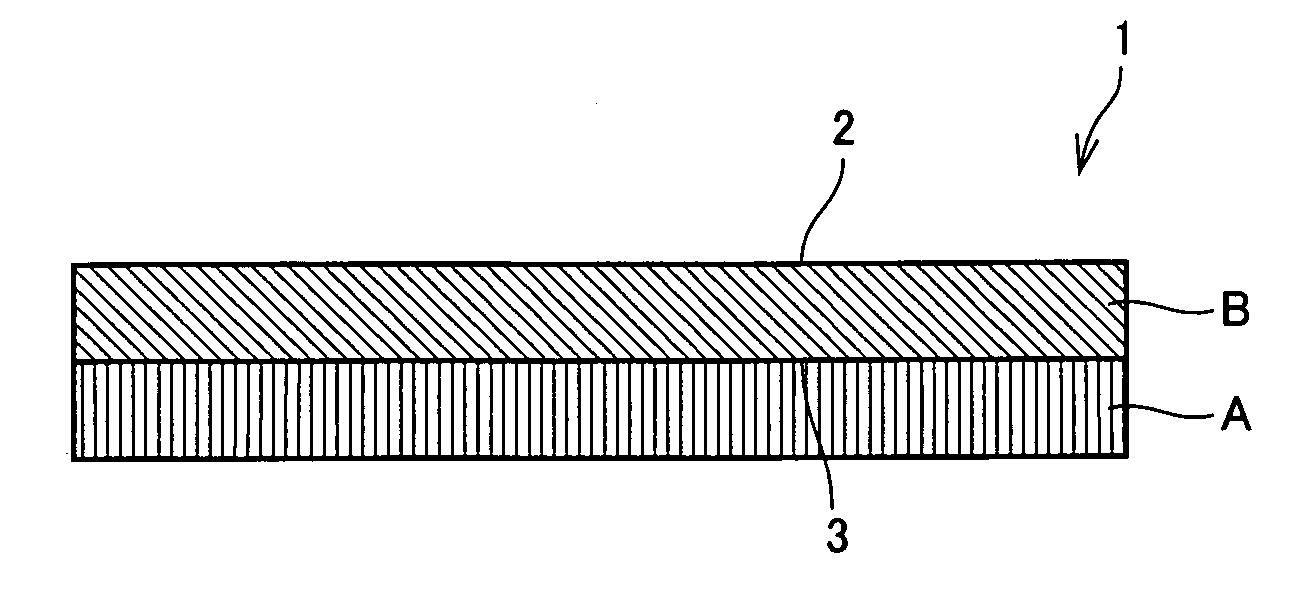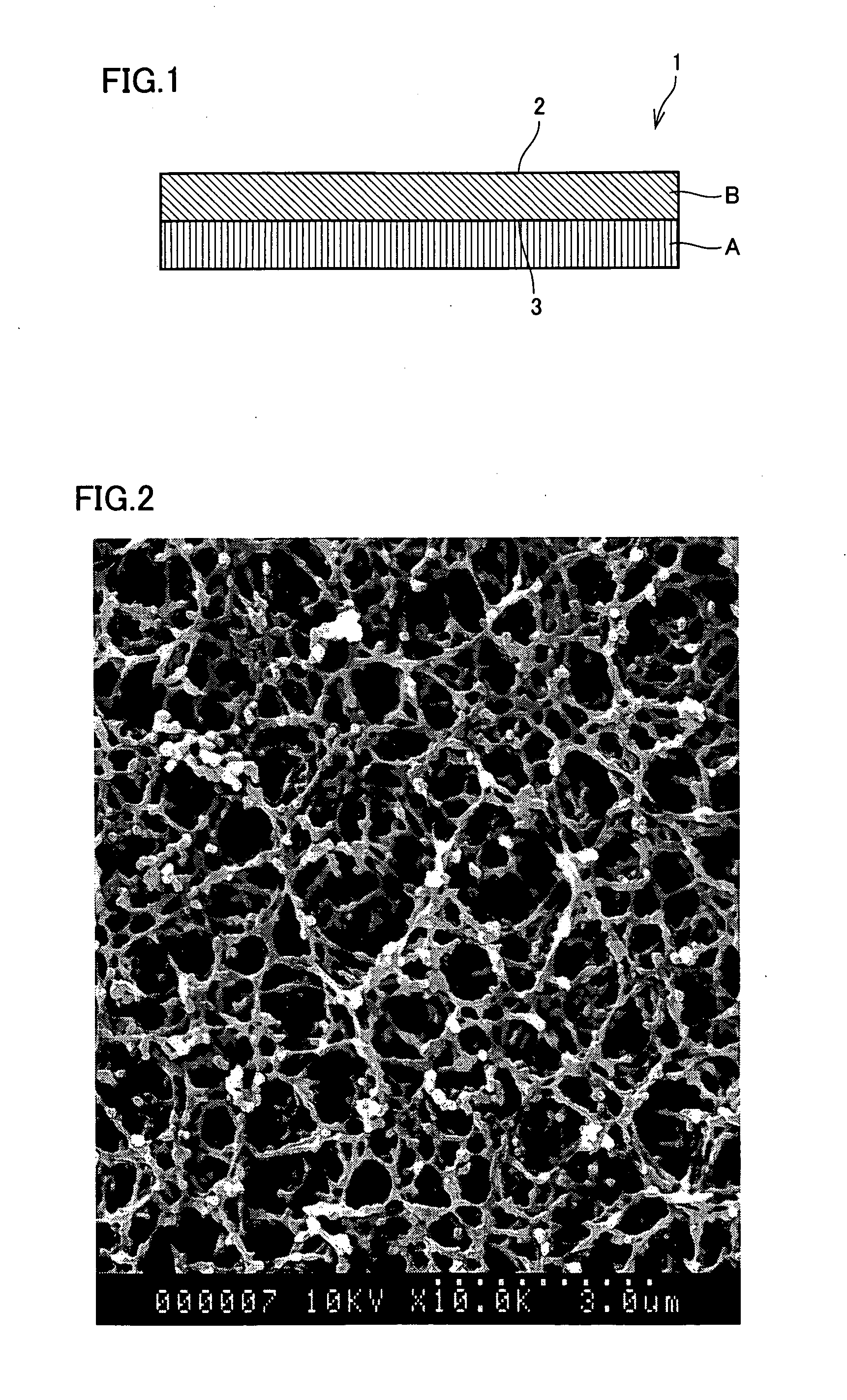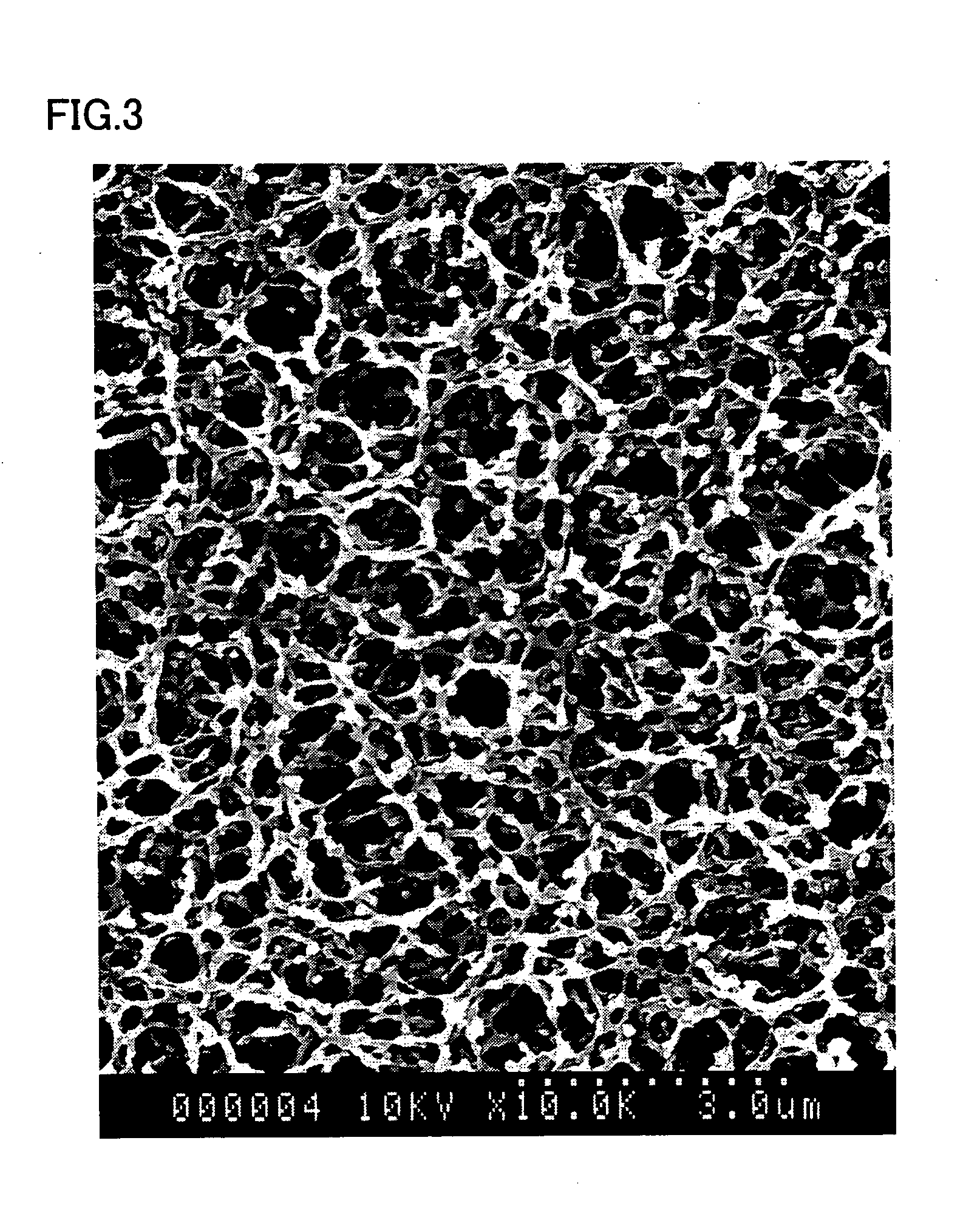Composite porous membrane, method of producing composite porous membrane, and battery separator, battery and capacitor using the same
- Summary
- Abstract
- Description
- Claims
- Application Information
AI Technical Summary
Benefits of technology
Problems solved by technology
Method used
Image
Examples
example 1
[0116]To 100 parts by weight of a polyamideimide resin solution (HR11NN available from TOYOBO Co., Ltd., concentration of nonvolatile content: 15% NMP solution, glass transition temperature: 280° C.), 20 parts by weight of polyethylene glycol (PEG-400 available from Sanyo Chemical Industries Ltd.) was added and mixed to homogeneity at room temperature (Coating solution 1).
[0117]After applying the coating solution 1 on the surface having preliminarily subjected to a corona discharge treatment of a propylene film (pi-wren-OT available from TOYOBO Co., Ltd.) which is a substrate with a clearance of 30 μm and application speed of 1.0 m / min, the film was caused to pass through the atmosphere of 80% RH at 25° C. over 30 seconds, to obtain porous membrane B in semi-gel state.
[0118]On the semi-gel porous membrane B, a polyethylene porous film (thickness: 20 μm, porosity: 40%, air permeability: 300 sec / 100 cc Air) which is porous membrane A was laminated, and caused to enter in an aqueous so...
example 2
[0119]To 100 parts by weight of a polyamideimide resin solution (HR16NN available from TOYOBO Co., Ltd., concentration of nonvolatile content: 14% NMP solution, glass transition temperature: 320° C.), 15 parts by weight of polyethylene glycol (PEG-400 available from Sanyo Chemical Industries Ltd.) was added and mixed to homogeneity at room temperature (Coating solution 2).
[0120]After applying the coating solution 2 on the surface having preliminarily subjected to a corona discharge treatment of the propylene film (pi-wren-OT available from TOYOBO Co., Ltd.) which is a substrate with a clearance of 20 μm and application speed of 1.0 m / min, the film was caused to pass through the atmosphere of 80% RH at 25° C. over 30 seconds, to obtain porous membrane B in semi-gel state.
[0121]On the semi-gel porous membrane B, the polyethylene porous film (thickness: 10 μm, porosity: 47%, air permeability: 80 sec / 100 cc Air) which is porous membrane A was laminated. At this time, since tensile stren...
example 3
[0122]To a four-necked flask with a condenser and a nitrogen gas inlet, 0.5 mol of pyromellitic dianhydride, 0.5 mol of biphenyltetracarboxylic dianhydride, 0.5 mol of diphenylmethane-4,4′-diisocyanate and 0.5 mol of hexamethylene diisocianate were charged together with NMP so that solid concentration was 20%, and allowed to react at 150° C. for about one hour. The obtained solvent-soluble polyimide resin have a concentration of nonvolatile content of 20%, a logarithmic viscosity of 0.7 g / dl, and a glass transition temperature of 190° C. Composite porous membrane 1 as shown in FIG. 1 was obtained in the same manner as in Example 1 except that this polyimide resin solution was used.
PUM
| Property | Measurement | Unit |
|---|---|---|
| Temperature | aaaaa | aaaaa |
| Temperature | aaaaa | aaaaa |
| Temperature | aaaaa | aaaaa |
Abstract
Description
Claims
Application Information
 Login to View More
Login to View More - R&D
- Intellectual Property
- Life Sciences
- Materials
- Tech Scout
- Unparalleled Data Quality
- Higher Quality Content
- 60% Fewer Hallucinations
Browse by: Latest US Patents, China's latest patents, Technical Efficacy Thesaurus, Application Domain, Technology Topic, Popular Technical Reports.
© 2025 PatSnap. All rights reserved.Legal|Privacy policy|Modern Slavery Act Transparency Statement|Sitemap|About US| Contact US: help@patsnap.com



